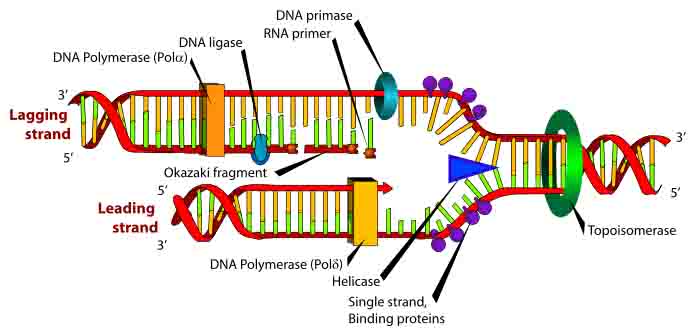Why is it necessary to have leading and lagging strands during DNA replication?
1 Answer
-
. DNA polymerase can add only add new DNA nucleotides to a pre-existing chain of nucleotides.
-
So RNA primers are used for initiation of new DNA chains.
- RNA primer is short piece of RNA, synthesised at the
#5^1# end of the new strand with the help of DNA specific RNA polymerase enzyme called primase and primers provide free#3^1# -OH for DNA polymerase to start polymersing. -
leading template strand requires primer only ones. But lagging
template strand requires many primers. -
Once primer is ready DNA Pol(III) will come & start adding
deoxyribonucleotide to the#3^1# -OH of primer by complementary basepairing. -
Two nucleotides link each other by
#3^1-5^1# phosphodiester bond. -
The daughter DNA for
#3^1-5^1# template is synthesised continuously, Therefore called leading strand. -
DNA polymeraseIII has
#3^1-5^1# Exonuclease activity#rarr# It can add nucleotides in the#5^1-3^1# direction. -
Replication is discontinuous on the other template with polarity
#5^1-3^1# because only a short segment of DNA strand can be built in#5^1-3^1# direction due to exposure of a small stretch of template at one time.

-
As one strand grows continuously while the other strand is formed discontinuously, DNA replication is semidiscontinuous.

